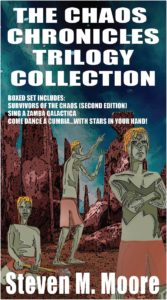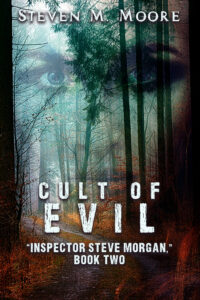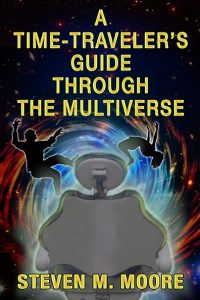Dialogue and narrative revisited…
While I’ve discussed these two topics elsewhere (for example, in my free PDF download “Writing Fiction”—see the list on my “Free Stuff & Contests” web page), I’ll mention them again because I consider them and their balance so important when writing fiction. Some fiction writers emphasize one over the other, maybe depending on the type of novel.
There’s no argument about sci-fi: It often requires a lot of world-building, which is narrative, of course. (I’ll never forget the incompetent agent who, early on in my writing career, couldn’t comprehend this. We Irish hold grudges for a long time! Her comment, “There’s too much narrative” soured me on agents in general and established for me a twist on an adage, “Those who can write should do it; those who can’t, should become agents or editors.”) Other genres might require more emphasis on dialogue (especially if you count “internal dialogue”—what goes on in a character’s mind—as a mental conversation with themselves).
 Like all the elements used in writing fiction, an author must handle dialogue and narrative with care and skill. The Goldilocks principle is often indicated: Not too much of one or the other but just right. As you read other authors’ works, you’ll see the amount of each employed cannot only depend on genre but also on the location in the story. World-building is usually done early on, but in the novel I submitted to that incompetent agent, Survivors of the Chaos—she asked to read it, by the way—it had to be used all the way through because the venues so often changed. (This novel is the first of a trilogy, and all three books are now contained in The Chaos Chronicles Trilogy Collection, an ebook bundle.)
Like all the elements used in writing fiction, an author must handle dialogue and narrative with care and skill. The Goldilocks principle is often indicated: Not too much of one or the other but just right. As you read other authors’ works, you’ll see the amount of each employed cannot only depend on genre but also on the location in the story. World-building is usually done early on, but in the novel I submitted to that incompetent agent, Survivors of the Chaos—she asked to read it, by the way—it had to be used all the way through because the venues so often changed. (This novel is the first of a trilogy, and all three books are now contained in The Chaos Chronicles Trilogy Collection, an ebook bundle.)
 In my British-style crime stories (novels in the “Inspector Steve Morgan” series are the most recent), I first briefly emphasize narrative (describing the British settings, including police stations, because they’re unfamiliar to many US readers), and then I move early on to dialogue (direct and internal), which often plays a more important role (especially in interrogations). But the parts dedicated to narrative are less in my US crime stories (like the novels in the “Detectives Chen and Castilblanco” series—the free PDF Defanging the Red Dragon is a crossover novel in two series featuring the US detective Castilblanco and the UK detective Brookstone, which requires the acrobatics I performed there to tell that that tale).
In my British-style crime stories (novels in the “Inspector Steve Morgan” series are the most recent), I first briefly emphasize narrative (describing the British settings, including police stations, because they’re unfamiliar to many US readers), and then I move early on to dialogue (direct and internal), which often plays a more important role (especially in interrogations). But the parts dedicated to narrative are less in my US crime stories (like the novels in the “Detectives Chen and Castilblanco” series—the free PDF Defanging the Red Dragon is a crossover novel in two series featuring the US detective Castilblanco and the UK detective Brookstone, which requires the acrobatics I performed there to tell that that tale).
And then we have another important aspect of dialogue to consider: How much slang and/or local idiom should an author use? For the same reason as above, I include local expressions to provide local color but provide the US reader a glossary at the front of most of my British-style mysteries. (If I’ve missed listing some that are unfamiliar to you—I’ve read a lot of Brit-style crime stories and am now used to the UK’s lexicon that’s as varied as the US’s at times—please let me know, and I’ll add it to the glossary if there’s a second edition.) Words like “nick,” “wanker,” “pillock,” and “eejit” aren’t part of American English (and maybe not Canadian or Australian either), but they add local color that can become an essential part of a character’s description.
The to-and-fro of direct dialogue has to be handled with care. When he is speaking to her, or vice versa, it’s usually not difficult for the reader to keep things straight, but two males or two females talking can create confusion, so names have to be used more within the dialogue or dialogue tags (what’s outside the quotes). They shouldn’t interrupt the flow if done correctly, only inform.
That flow is critical. The basic rule for writing fiction is to avoid forcing readers into situations where they stop and say, “Huh?” or “What’s going on here?” Think of it this way: A speed-reader (moi, par exemple!) should be able to breeze right through those questions if they occur. Tom Clancy suggests a course of action: Just tell the damn story! Anything that inferferes with that should be questioned by the story’s author. A writer doesn’t need either an agent or editor to tell them that. It should be obvious.
One thing is certain, though: Whatever you do in your fiction writing, don’t let Microsoft’s Copilot write your dialogue, especially in Aptos or Calibri. AI isn’t permitted in manuscripts submitted to traditional publishers, and self-publishers shouldn’t use it either. Times New Roman is still the font of choice you should use for your writing. (Microsoft’s sneaky changes to Aptos from Calibri and addition of Copilot—hell, we just got rid of Cortana!—shows how low that company has sunk!)
***
 Comments are welcome. (Please follow the rules on the “Join the Conversation” web page.)
Comments are welcome. (Please follow the rules on the “Join the Conversation” web page.)
A Time Traveler’s Guide through the Multiverse. This sci-fi rom-com provides an example of many of the suggestion described above: It’s a lively mix of narrative (i.e. sci-fi world-building, many worlds, in fact—that’s an in-joke)) and dialogue (in romantic spats or with comic prats). This stand-alone novel is a futuristic “road trip” that avoids the paradoxes of time travel but not those associated with human behavioral quirks. Enjoy!
Around the world and to the stars! In libris libertas!
